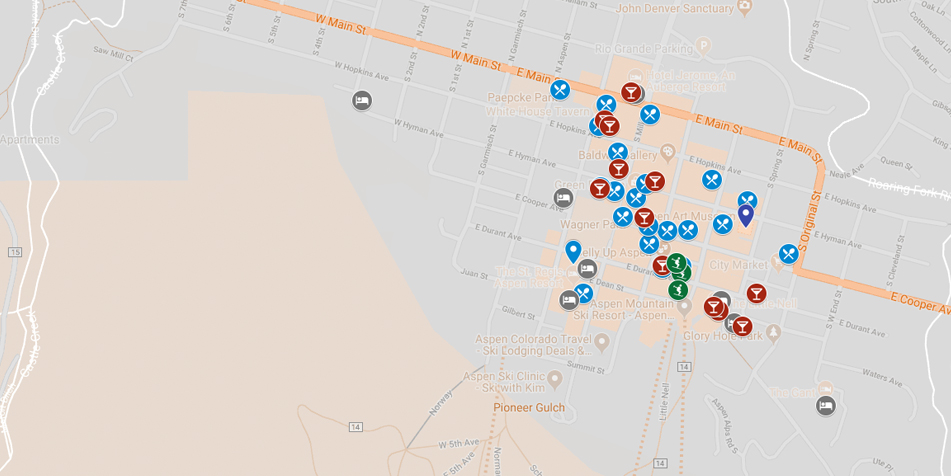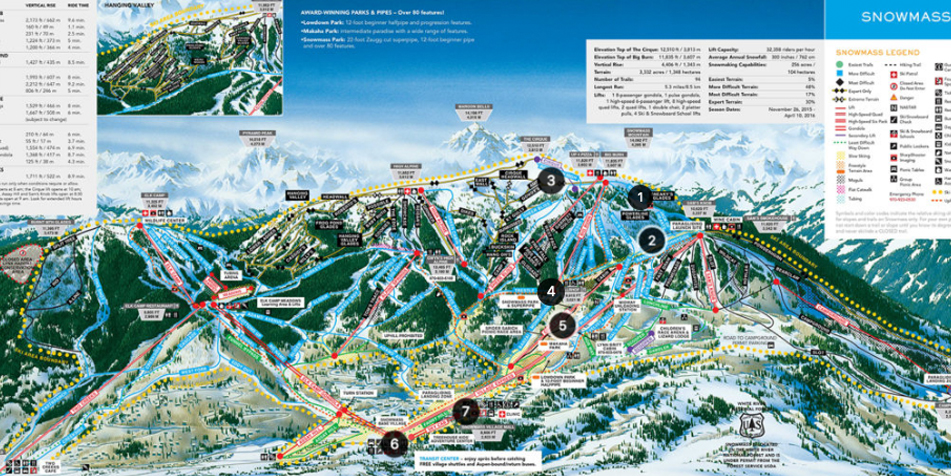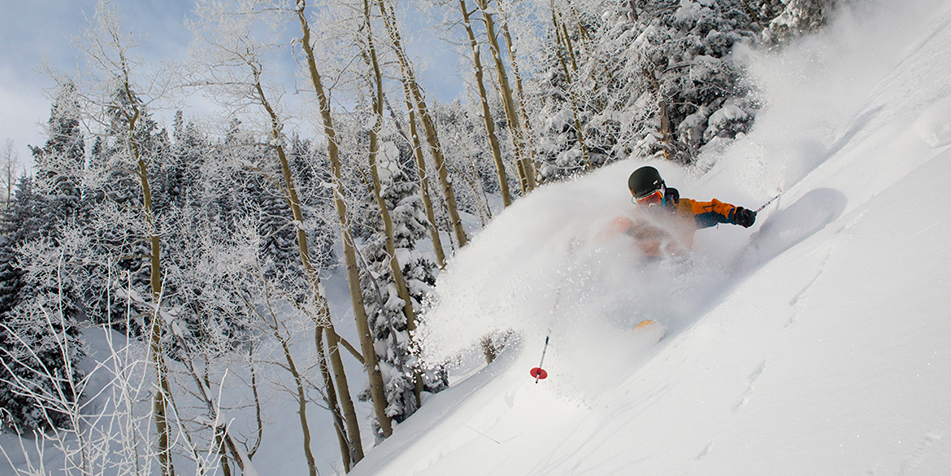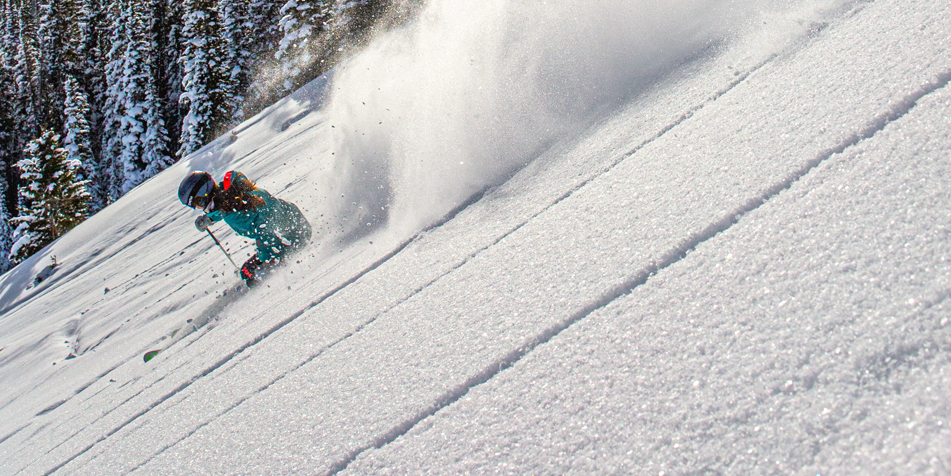The People’s Aspen
Where hard-working ski bums flourish
Aspen Mountain by the Numbers
Snowfall: 300 inches
Acreage: 675
Vert: 3,267 feet
Trails: 76
Lifts: 8
BC Gates: 2
Trail Breakdown
Beginner: 0%
Intermediate: 48%
Advanced: 52%
Imagine a mountain town with four ski areas—one of which includes a 2,000-vertical-foot bowl of legit, hike-to, exposed big-mountain terrain—and a free bus system connecting them all. Dream up a place where the sun shines 300 days a year (on average), where consistent winter storms refill stashes in 5,000 acres of resort terrain and where lift lines form only a few days per season. Picture skiing 3,200 feet down to a historic mining town bustling with over 100 bars, restaurants and music venues, all run on renewable energy. Visualize a ski town that gathers world leaders, scholars, scientists, musicians and artists and offers its residents big-city quality theatre, ballet, museums, music, lectures and more—much of it complimentary. And envision a lush wilderness in three directions, littered with backcountry huts, beckoning out-of-bounds skiers to ascend and descend peaks towering from 14,000 feet above sea level.
Fantasy is reality in Aspen, Colorado, and while one might assume it’s reserved for flashy celebs, wealthy international tourists and third homeowners, young skiers in town, like Jordan White, will tell you otherwise.
“People have a ritzy view of Aspen,” says White. “It’s not unfounded, but outside of the Gucci-toting crew, there exists a huge community of people who enjoy living and playing in some of the most beautiful mountains in the world. People who work hard to play hard and couldn’t care less how much money someone has.”
Outside of the notorious week between Christmas and the New Year—when private jet parking reaches capacity at Sardy Field (Aspen–Pitkin County Airport)—middle class families, hardcore athletes, wilderness lovers and even real ski bums make up the majority of Aspen.
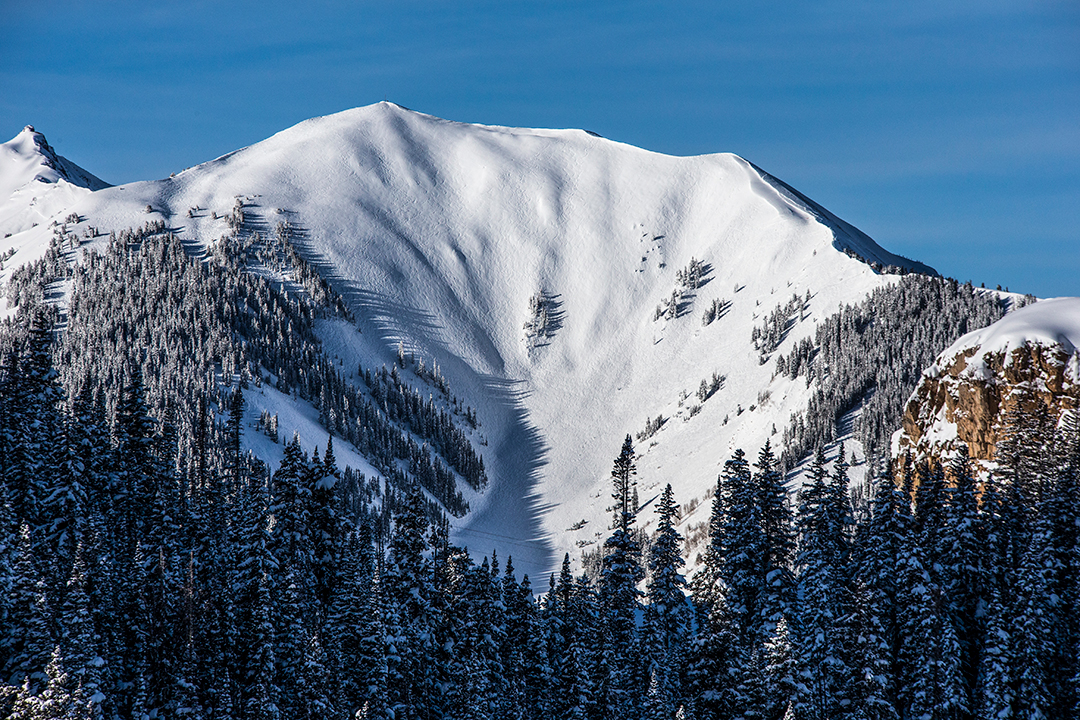
White, 30, grew up in Denver, attended college up the road in Fort Collins and moved to the Roaring Fork Valley in 2008 for a job in the mountains. After working a desk position down valley in Carbondale—about 40 minutes northwest of Aspen—as a project manager for a construction company, he decided to turn his hobby into a profession and pursue wilderness guiding. He certainly had the credentials: White climbed his first Colorado “14er” at age five and in 2009, at 23, he climbed and skied his 54th, making him the fifth overall and youngest person to ski all of the state’s 14,000-foot-plus peaks. He’s skied Denali and other challenging routes in Alaska, too. Today, as a guide for Aspen Alpine Guides, White leads clients up and down mountains in both summer and winter. He supplements guiding by ski instructing 30 to 50 days per winter and bartending three or four nights a week at Aspen’s oldest local watering hole, the Red Onion. He says the restaurant’s employee meals help cut down on food costs.
“Teaching skiing keeps me outdoors and not behind a desk,” says White.
When White isn’t guiding or teaching, he doesn’t have to clock in at the Red Onion until 5 p.m., which means he’s ski touring or shredding the resort.
“Aspen Mountain offers some of the most vert you can pound out in a day and some of the steepest, best terrain [the area] has to offer,” explains White. He says skiing top-to-bottom gondola laps is a leg crusher and advises throwing in a quick rest on Chair 6 every couple of runs. The 65-year-old ski area skis much larger than its acreage suggests. As White says, it’s quality over quantity. Find the traverses and work multiple fall lines and you’ll be rewarded with challenging steeps, mouth-watering tree runs and barely-skied alleyways and gullies. Lift 1A, an old double chair, offers the easiest access from the base to “The Dumps,” the steep, east-facing aspen trees off the top of F.I.S. chair that many locals hit first on a powder day.
At Aspen Highlands, which straddles a long ridgeline between the Castle Creek and Maroon Creek valleys 10 minutes from downtown Aspen, White spends most of his time in Highland Bowl. A 30 to 45-minute ridge hike—depending on your pace—awards wide open, sustained pitches littered with big-mountain features or steep, adventurous tree lines. Patrol keeps the area stable with its annual bootpacking program, where locals can hike up and down the bowl for 15 days at the beginning of the season, helping to compact the snow, in exchange for a season pass.
“The bowl offers some of the most consistently steep fall line terrain I’ve skied anywhere in-bounds,” says White. “By the time you get to the top of the hike [12,392 feet], you really feel like you’re ‘out there.’”
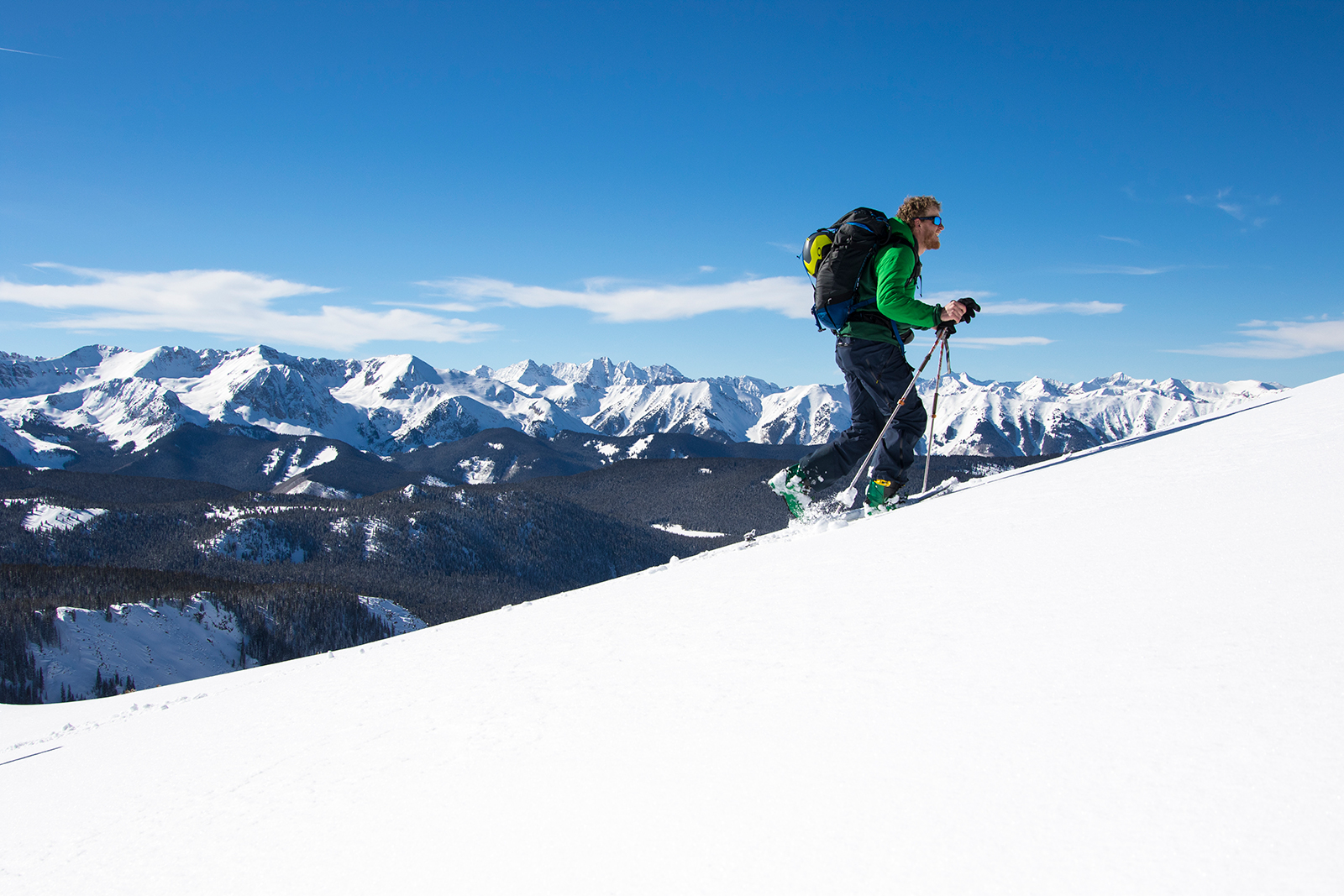
Buttermilk and Snowmass cater to both park skiers and families. With 4,406 feet of skiing, Snowmass offers more vertical than anywhere in the country. Though a lot of its 3,332 acres is cruising intermediate terrain, high alpine bowls offer steep shots and aesthetic cliff bands hide some rowdy lines. The place is also well known for its three terrain parks and superpipe. Most X Games fans know Buttermilk, however, and its professional terrain parks live up to the hype… and then some.
One thing all four mountains share is a lack of crowds.
“We don’t really have lift lines,” says White. “I grew up skiing the Front Range, Summit County and Vail and I think the lines are what drove me to start ski touring. After moving here it was awesome not having to deal with I-70 and never having to wait in line. Plus, the mountains around here are just bigger and steeper.”
For White, and many area skiers, housing in Aspen is the biggest challenge. “It’s getting harder,” says White. “But as a local, I work hard to play hard—that is the only way to make it in the long run.”
More From Aspen Snowmass
On Location: Aspen Snowmass
FREESKIER heads to one of the most beloved ski towns in Colorado get the inside scoop on resort life

